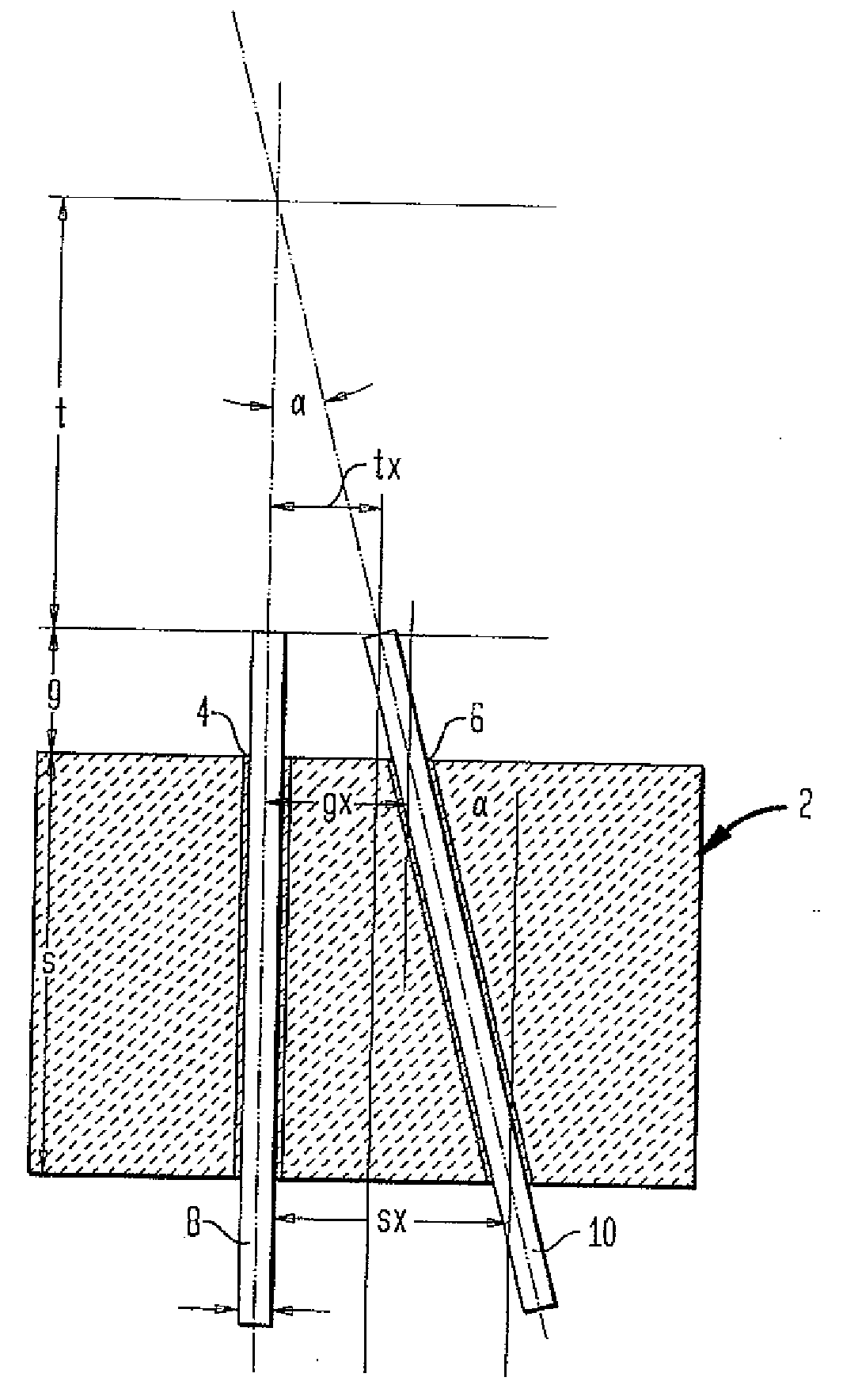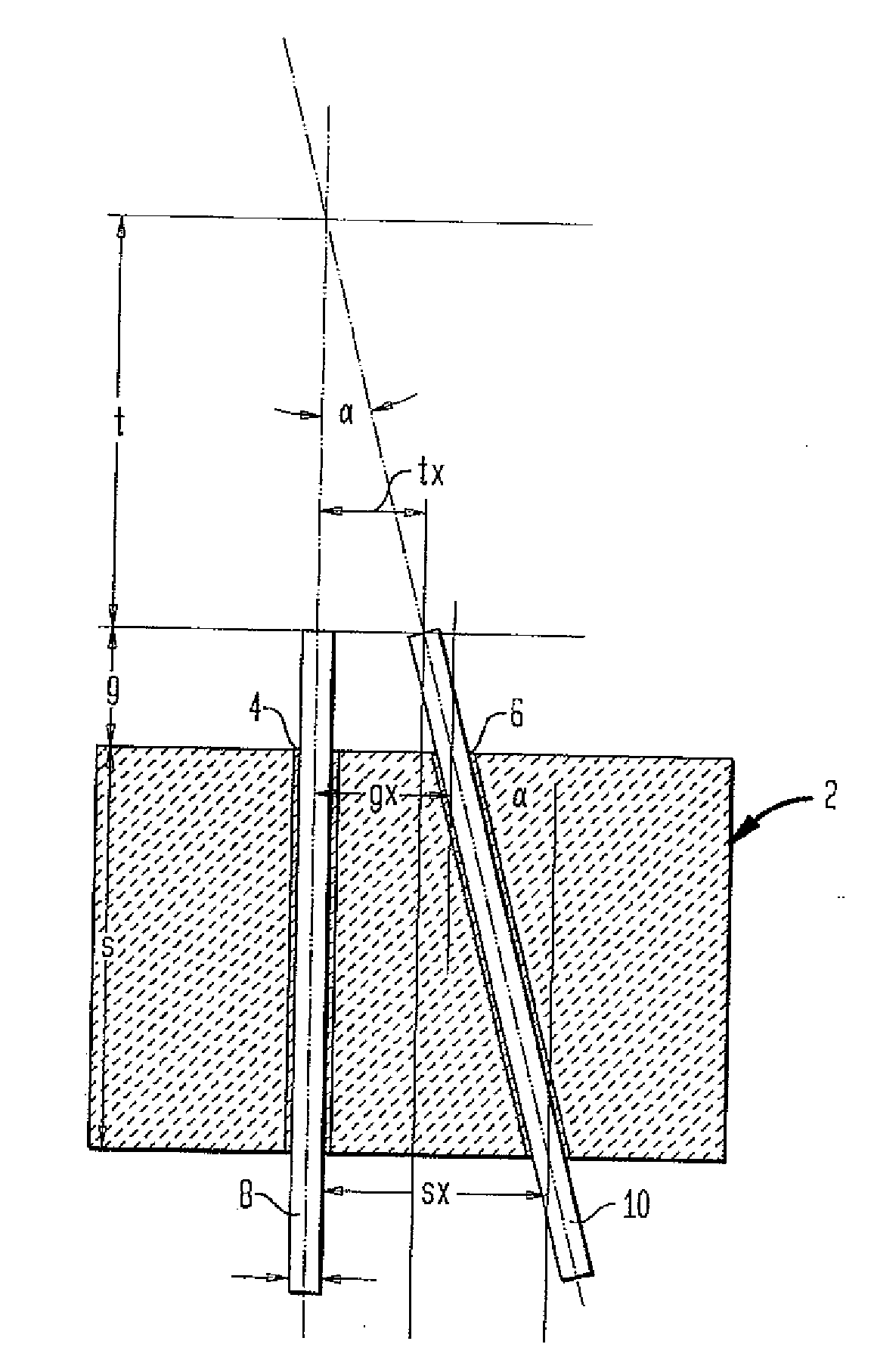Bubbling brick
a brick and brick technology, applied in the field of bricks, can solve the problem of introducing a relatively large amount of energy into the reaction of oxyhydrogen gas
- Summary
- Abstract
- Description
- Claims
- Application Information
AI Technical Summary
Benefits of technology
Problems solved by technology
Method used
Image
Examples
Embodiment Construction
[0014]The FIGURE shows the bubbling brick 2 with the two bores 4 and 6, wherein the bore 4 is realized vertically and the bore 6 is inclined by an angle α. The nozzle tubes 8 and 10 arranged within the bores 4 and 6 have a length that is greater than the thickness of the bubbling brick 2 and can be displaced upward and downward such that their tips can be adjusted to a certain height g within the glass melt. Due to these measures, the spacing of the gas outlets tx can be adapted to the glass melt conditions.
[0015]The following equations applied to the variables t, gx and α:
t=-g·tx-s·txtx-sxgx=tx+g·txtα=arctan(sxt+g+s)
[0016]One preferred spacing between the nozzles 8,10 lies between 30 and 60 mm. However, it would also be possible to use spacings between 20 and 100 mm. The diameter of the bores 4 or 6 preferably amounts to 15 mm. A few preferred dimensions are indicated in the following table:
Minimum nozzle spacingtxmm30Maximum spacing from brick surfacegmm150Spacing between outlets ...
PUM
| Property | Measurement | Unit |
|---|---|---|
| angle | aaaaa | aaaaa |
| angle | aaaaa | aaaaa |
| angle | aaaaa | aaaaa |
Abstract
Description
Claims
Application Information
 Login to View More
Login to View More - R&D
- Intellectual Property
- Life Sciences
- Materials
- Tech Scout
- Unparalleled Data Quality
- Higher Quality Content
- 60% Fewer Hallucinations
Browse by: Latest US Patents, China's latest patents, Technical Efficacy Thesaurus, Application Domain, Technology Topic, Popular Technical Reports.
© 2025 PatSnap. All rights reserved.Legal|Privacy policy|Modern Slavery Act Transparency Statement|Sitemap|About US| Contact US: help@patsnap.com



